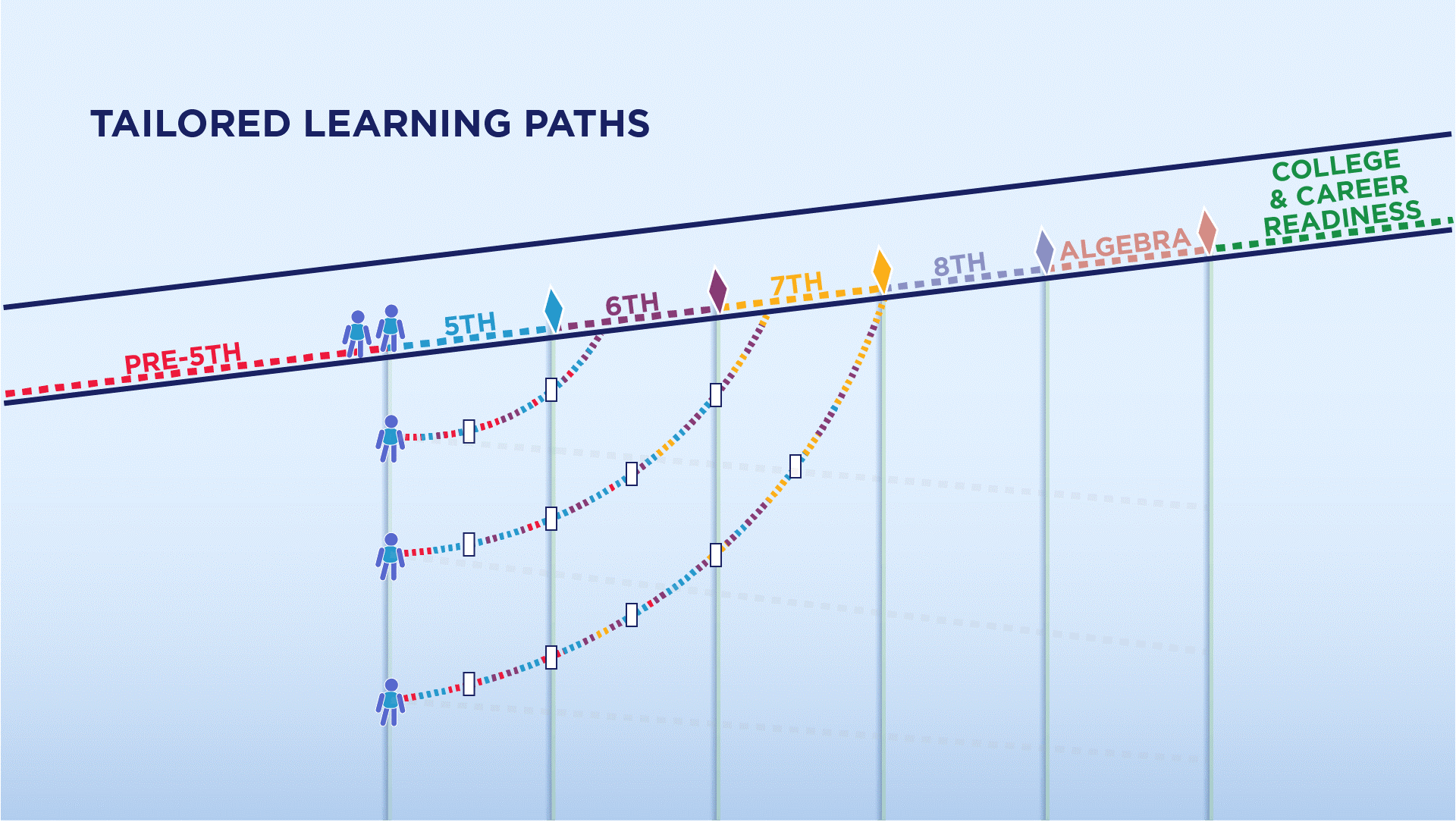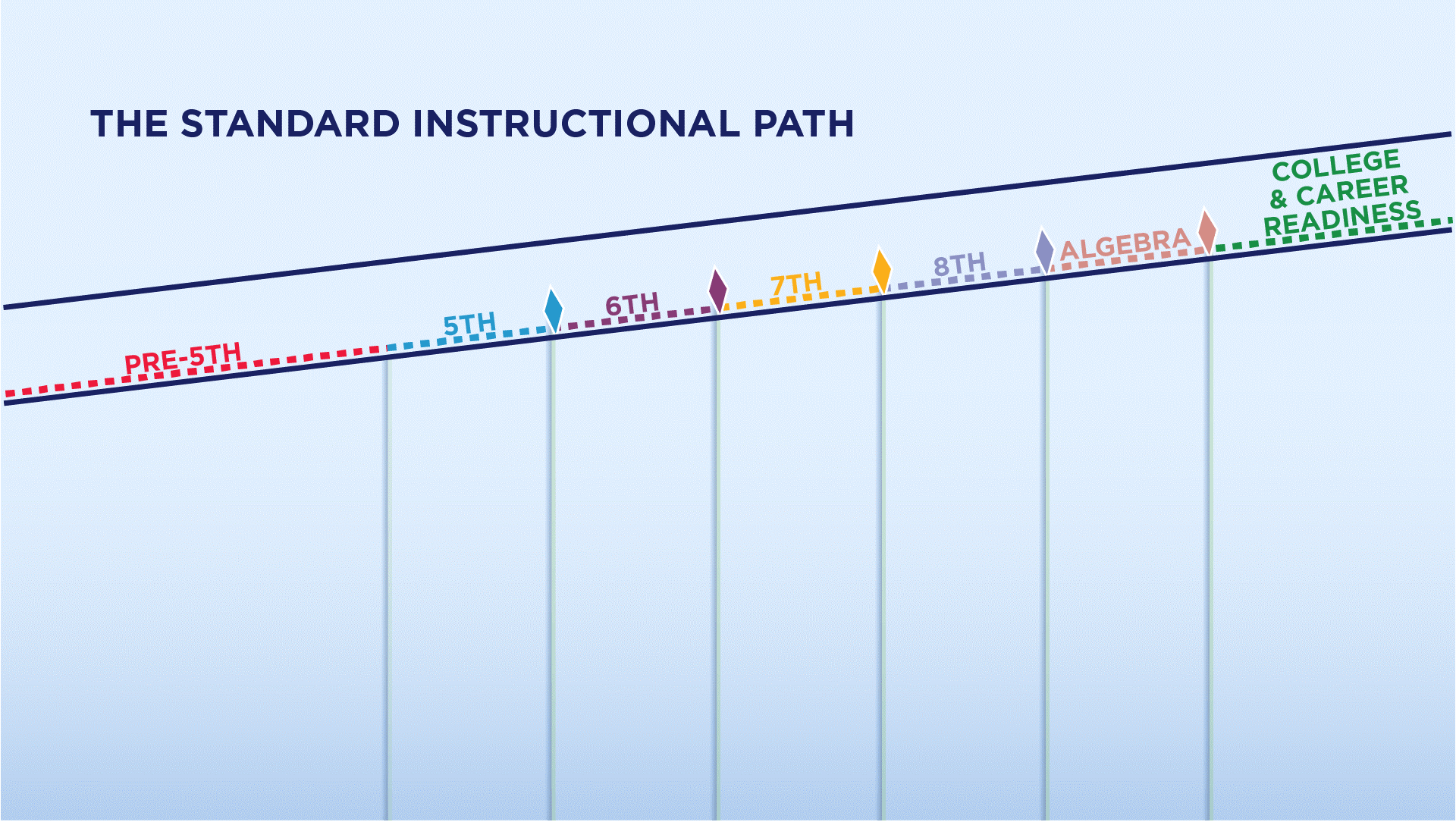Tailored paths that can combine pre-, on-, and post-grade skills are the solution
November 6, 2019
By: Joel Rose
Standards are written to reflect the instructional path that students should follow throughout their educational journey. In math, that includes concepts such as basic algebraic thinking in the early elementary grades, multiplying fractions in the fifth grade, working with ratios and rates in the sixth grade, and so forth. Let’s call this the “standard instructional path.”
At the end of each school year, students take a state summative assessment (marked by the filled diamonds in the chart below) that reflect student performance relative to the current year’s standards.[1]

While the standards themselves are clear and coherent, they provide little guidance about what to do for the millions of students who begin the school year without the precursor knowledge required to succeed with grade level material. This is especially problematic in math, given it’s so cumulative. A student is going to have a hard time learning how to calculate the area of a circle if they haven’t yet mastered multiplication.
Since only about two in five students begin fifth grade on the standard instructional path, how should schools best address the strengths and needs of students with unfinished learning dating back to elementary school?